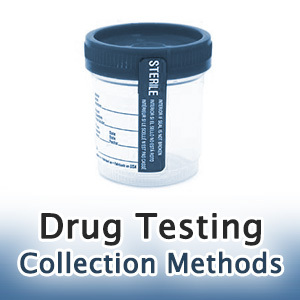
When employers establish drug-free workplace policies, they have multiple options when it comes to administering drug tests. Each method varies in detection time and intrusiveness. This is an overview of the four most common drug testing sample types that businesses may use to enforce their drug-free policies.
Urine drug testing
Urine drug tests are the most commonly used testing method by both employers and government agencies. They work by detecting the presence of illicit substances or their metabolites in the body. Drug metabolites are created when the body breaks down the injected chemicals. Testing for metabolites usually indicates the use of the parent (original) drug. Urine drug testing is the only approved method for federal requirements such as Department of Transportation (DOT) and Department of Health (DOH) regulations.
Detection times do differ greatly from drug to drug with urine testing. We published an infographic last year on how the detection period for marijuana can vary from a week to a few months depending on the individual. Detection periods for other drugs also depend on the amount of use. Some drugs, like opiates, have shorter windows around 2 days, and others, in the case of chronic use, can be detected through urinalysis for a month or more.
Hair drug testing
Although federal laws require the exclusive use of urine samples, hair drug testing is a common alternative. One of the main differences between urine and hair sample tests is that drugs are detected for a longer period of time with a hair sample.
The chance of sample substitution or modification in order to pass the drug test is minimized with the hair collection method, as the person that conducts the test directly obtains the sample from the individual’s body.
Hair testing can detect most drugs for up to 90 days after use. Urine testing detects drugs for a shorter period of time after use, generally ranging from 1 to 30 days depending on the drug.
Hair testing is less invasive than urine or blood testing, and has held up in court as a method of detecting drug use. It is also considered a more expansive option compared to the urine testing.
Blood drug testing
Blood testing is generally most applicable when an employee is suspected to actively be under the influence of drugs. It tests for the presence of the illicit drug, rather than its metabolites. Blood drug testing also has a short detection window and can be more expensive for businesses, so it is not as common as a preferred method of drug testing.
However, for post-accident drug testing, it can be rather useful to determine whether an employee was under the influence at the time of the accident, as long as the test is given promptly afterwards.
Saliva drug testing
Saliva drug testing, like any testing method, has its advantages and disadvantages. Similar to hair analysis, it is non-intrusive. It is also difficult for an employee to tamper with the sample in order to try and beat the test, because a saliva test can be directly observed.
The main disadvantage of saliva testing is that it is not preferable for detecting historical drug use. The detection window is short, ranging from 5-48 hours. The donor should refrain from eating within 10 minutes of the test to avoid adulterating the results.
Like blood testing, this may be useful for time-sensitive applications like post-accident testing, but for pre-employment, random, annual or return-to-duty tests, other methods with longer detection times are usually better options.
